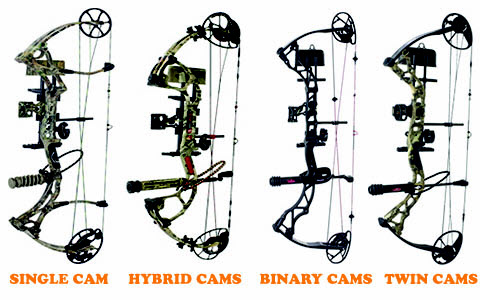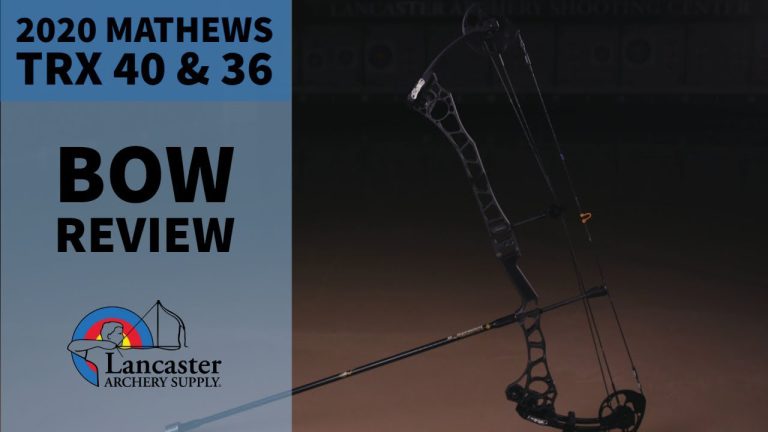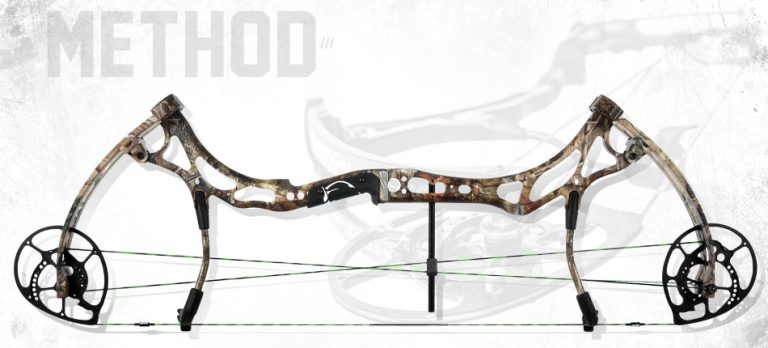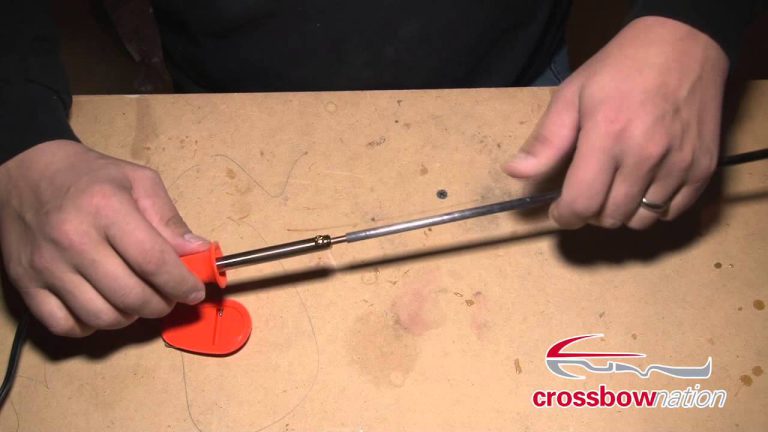Single Vs Double Cam Bow
The article “Single Vs Double Cam Bow” explores the world of compound bows, highlighting their mechanics, advantages, and why they have become the preferred choice for many archers. A compound bow is characterized by a system of cables, pulleys, and cams that assist the archer in holding a high poundage at full draw. Unlike traditional bows, compound bows reach a peak weight and then “let-off” to a lower holding weight, allowing for better aiming. The article also delves into the key components of a compound bow, the advantages they offer in terms of power, speed, and accuracy, and provides guidance on choosing the right compound bow based on individual needs and preferences. Furthermore, maintenance and safety tips are provided to ensure a safe and enjoyable archery experience. Overall, the compound bow revolutionizes the archery world by combining age-old principles with cutting-edge technology, offering both seasoned archers and beginners a thrilling and unique experience.

1. Single Cam Bows
1.1. Definition and Anatomy
Single cam bows, also known as solo cam bows, are a type of compound bow that utilizes a single cam system. This system consists of a sole cam located at the bottom limb, with a power cable and control cable attached to it. The power cable is responsible for transferring energy from the limbs to the cam, while the control cable maintains the bow’s timing and synchronization.
1.2. Advantages
One of the key advantages of single cam bows is their simplicity and ease of use. The single cam system eliminates the need for tuning multiple cams, making it ideal for beginners or archers who prefer a more straightforward setup. Additionally, single cam bows tend to be quieter and require less maintenance compared to double cam bows.
Another advantage is that single cam bows have a smoother draw cycle. The cam’s design allows for a gradual increase in draw weight, resulting in a more comfortable and consistent shooting experience. This can be particularly beneficial for archers who require a longer draw length or struggle with a high peak draw weight.
1.3. Disadvantages
While single cam bows offer several advantages, they also have some drawbacks to consider. One of the main disadvantages is that they are generally slower compared to double cam bows. The single cam design sacrifices a bit of speed for simplicity, which may not be ideal for archers looking for faster arrow velocities.
Another disadvantage is that single cam bows may have less adjustability compared to their double cam counterparts. The absence of a second cam limits the range of draw length adjustments available, which may not accommodate all archers’ specific needs. Additionally, the lack of a second cam can also affect the overall adjustability of the bow’s draw weight.

2. Double Cam Bows
2.1. Definition and Anatomy
Double cam bows, as the name suggests, feature two cams, one on each limb of the bow. These cams work together in a synchronized manner, connected by control cables and power cables. The dual cam system allows for precise tuning and synchronization, resulting in increased performance and efficiency.
2.2. Advantages
One of the primary advantages of double cam bows is their ability to generate higher arrow speeds compared to single cam bows. The synchronized movement of the cams allows for maximum energy transfer, resulting in faster arrow velocities. This makes double cam bows an excellent choice for archers participating in competitions or hunting situations where speed is crucial.
Additionally, double cam bows often offer a wider range of adjustability. The presence of two cams allows for more precise tuning of draw length and draw weight, catering to a broader range of archers. This adjustability can be beneficial for archers who want to fine-tune their setup to maximize their shooting performance.
2.3. Disadvantages
Despite the advantages, double cam bows also come with a few disadvantages. One downside is that double cam bows tend to be slightly more complex in terms of setup and maintenance. Proper tuning and synchronization of the cams require more attention to detail, which may not be ideal for beginners or less experienced archers.
Another disadvantage is that double cam bows may produce slightly more noise and vibration compared to single cam bows. The synchronized movement of the cams can create additional vibrations, potentially impacting accuracy if not properly addressed through accessories like stabilizers or dampeners.

3. Key Differences between Single and Double Cam Bows
3.1. Draw Cycle
The draw cycle refers to the feel and smoothness of drawing the bow. Single cam bows generally have a smoother draw cycle due to the gradual increase in draw weight. In contrast, double cam bows may have a slightly steeper and more aggressive draw cycle, which some archers prefer for its added power and speed.
3.2. Speed
When it comes to speed, double cam bows often have the advantage. The synchronized movement of the cams allows for greater energy transfer to the arrow, resulting in faster arrow velocities. However, the speed difference may not be significant for all archers, and the trade-off for speed may be a slightly more complex setup and maintenance.
3.3. Accuracy
Both single and double cam bows can offer excellent accuracy when properly tuned and maintained. However, some archers may find that the smoother draw cycle of single cam bows helps them achieve better accuracy by allowing them to hold the bow steadier while aiming. On the other hand, double cam bows’ higher speed and adjustability may contribute to improved accuracy for archers who can harness their potential.
3.4. Adjustability
Double cam bows typically offer more adjustability in terms of draw length and draw weight. The presence of two cams allows for more precise adjustments to cater to individual archer preferences. Single cam bows, while still adjustable, may have a more limited range of options due to the single cam system.
3.5. Maintenance
In terms of maintenance, single cam bows are generally easier to maintain due to their simpler design. The absence of a second cam reduces the number of moving parts and potential points of failure. Double cam bows may require more frequent tuning and adjustments to ensure proper synchronization, making maintenance slightly more involved.

4. Choosing the Right Cam System
4.1. Purpose and Intended Use
When choosing between a single or double cam bow, consider your purpose and intended use. If you prioritize simplicity and ease of use, a single cam bow may be the better option. On the other hand, if speed and adjustability are crucial for your specific archery goals, a double cam bow might be more suitable.
4.2. Personal Preference
Ultimately, personal preference plays a significant role in selecting the right cam system. Some archers may prefer the smooth draw cycle and simplicity of a single cam bow, while others may prioritize the speed and fine-tuning capabilities of a double cam bow. Trying out both types and assessing how they feel and perform can help you determine your personal preference.
4.3. Experience Level
Consider your experience level when choosing a cam system. Beginners or archers new to compound bows may find single cam bows more forgiving and easier to learn with. The smoother draw cycle and ease of maintenance can provide a less intimidating introduction to compound bows. More seasoned archers may appreciate the increased performance and adjustability offered by double cam bows.
4.4. Considerations for Hunting
Hunters should consider factors such as speed, accuracy, and adjustability when selecting a cam system for hunting. Double cam bows generally excel in speed and offer more adjustability to fine-tune your setup for hunting scenarios. However, single cam bows can still be viable options, particularly for hunters who prioritize a smooth draw cycle and simplicity.
4.5. Considerations for Target Archery
For target archery, accuracy and adjustability are key considerations. Both single and double cam bows can be suitable for target archery, depending on personal preference. Single cam bows may provide a smoother draw cycle, promoting steadiness and accuracy during the aiming process. Double cam bows, with their speed and adjustability, offer precision for target archers aiming to maximize their performance.

5. Conclusion
In conclusion, the choice between single and double cam bows ultimately depends on individual preferences, intended use, and experience level. Single cam bows offer simplicity, a smoother draw cycle, and ease of maintenance, making them great options for beginners or archers seeking a more straightforward setup. On the other hand, double cam bows provide higher speeds, increased adjustability, and performance benefits that may appeal to more experienced archers and those seeking specific advantages in hunting or target archery scenarios.
Regardless of your choice, both single and double cam bows represent the innovative and technologically advanced nature of compound bows. Appreciate the unique advantages each cam system offers, and strive to find the one that suits your archery journey, allowing you to excel and enjoy the thrilling experience of shooting a compound bow.








